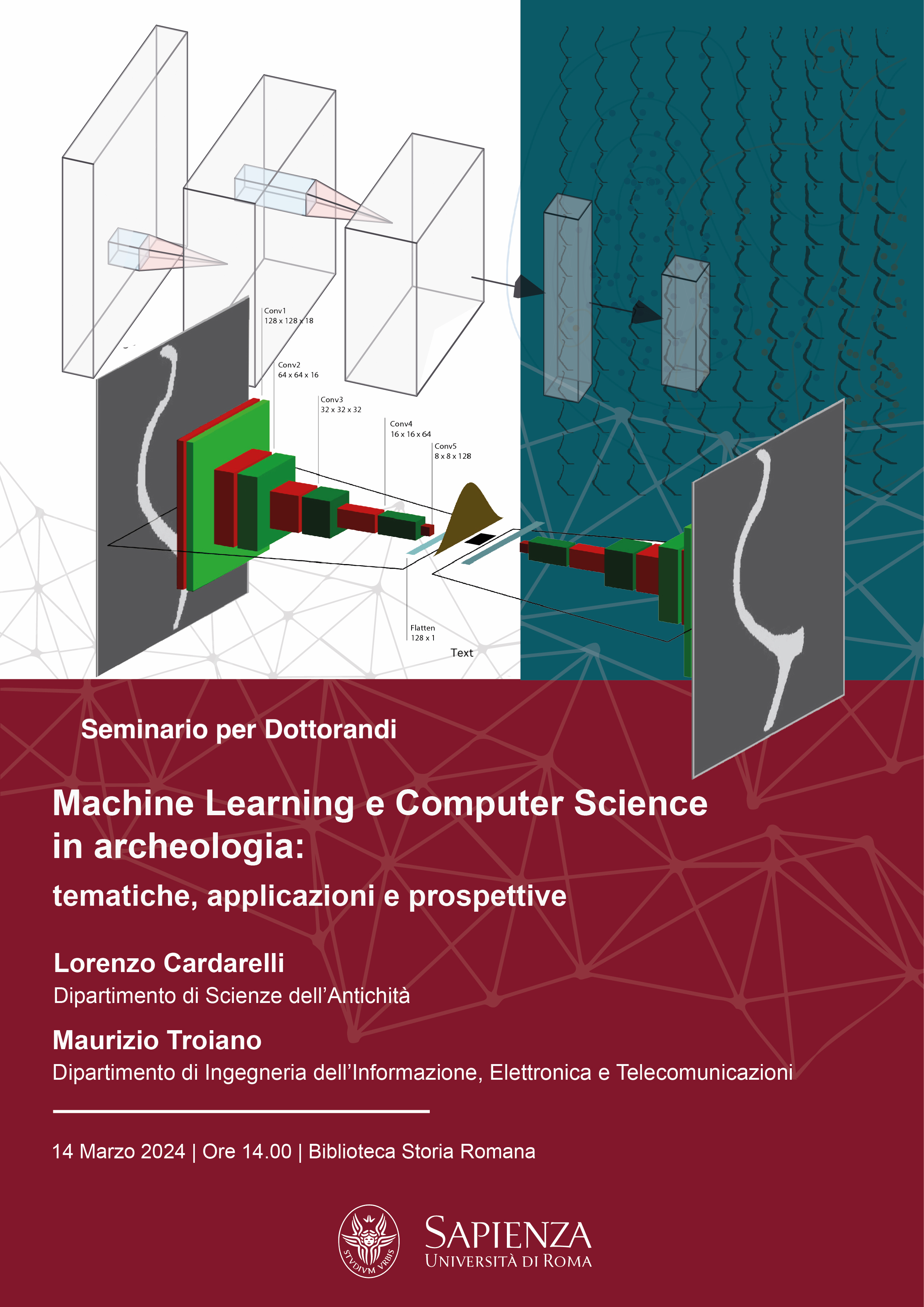
The increasingly widespread application of artificial intelligence is transforming many areas, including work, communication, business, and research. Words and concepts such as neural networks, generative models and Large Language Models have become part of our everyday vocabulary. But what exactly can artificial intelligence techniques offer in the context of archaeological research? This lecture aims to explore and analyse the relationship between archaeology and artificial intelligence, focusing on key concepts such as Machine Learning, Deep Learning and Computer Science. These tools can help archaeologists analyse large amounts of data, identify patterns and relationships, develop new research methods, and communicate results more effectively. The main aim is to provide an introductory framework to the topic, providing the necessary information to contextualise the topic within the framework of archaeological research. During the seminar, the main themes, case studies and theoretical underpinnings will be presented, providing the PhD students with the necessary tools to understand, exploit and potentially apply the potential of these techniques in the field of archaeological and humanistic disciplines.
March 14, 2024
Lorenzo Cardarelli, archaeologist and PhD with a project on Variability and standardisation of ceramic shapes in the second and first half of the first millennium BC in continental Italy. A Data Science and Machine Learning project for the quantitative study of ceramic profiles;
Maurizio Troiano, an engineer specialised in machine learning and PhD with a project on Machine Learning Techniques for the identification of hepatocarcinoma cells from immunofluorescence images;
These two scholars discuss the potential and problems of using machine learning within scientific research and especially in archaeology. They will also discuss, with reference to specific case studies, the tools for such approaches.